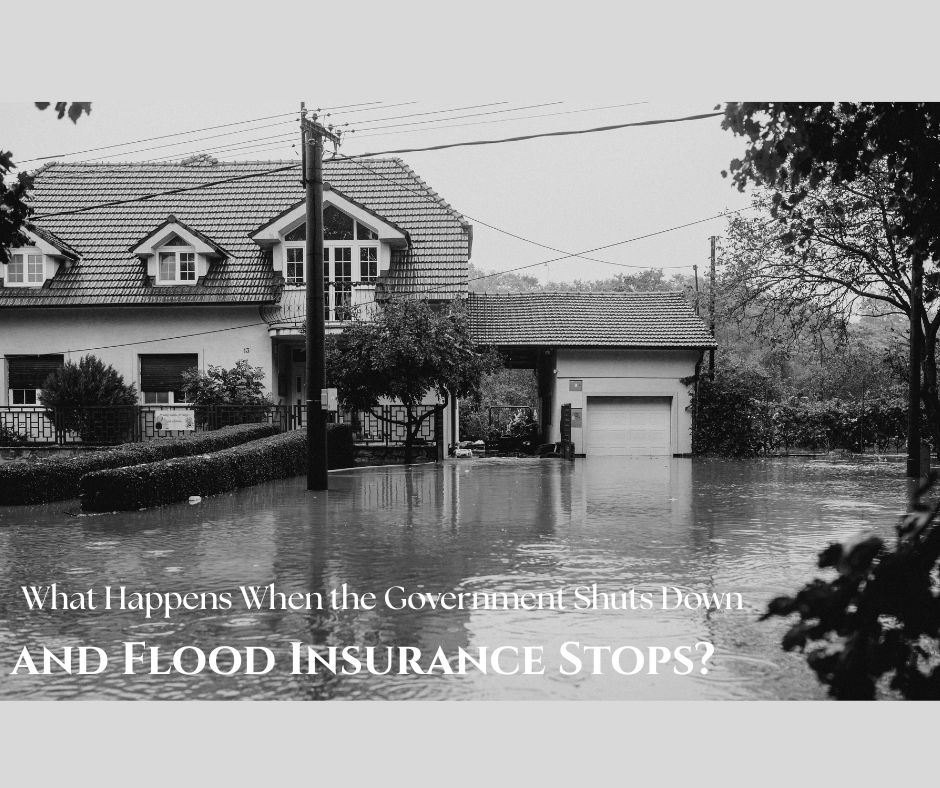When the Safety Net Fails: The NFIP Lapse and Its Fallout in the U.S. — and in Massachusetts
The Stakes Across America
Flooding is among the most common and economically destructive natural disasters in the U.S. Because standard homeowner insurance typically excludes flood damage, separate flood coverage is essential for homes in high-risk zones.
The National Flood Insurance Program (NFIP) plays a critical role: it currently insures $1.3 trillion in coverage across 4.7 million policies in about 23,000 communities nationwide.
When NFIP authority lapses (as it can during a federal funding impasse), the consequences are serious:
-
No new policies or renewals can be issued.
-
Existing policies remain in force until they expire (plus their usual grace period), but cannot be expanded or modified.
-
The mandatory flood insurance requirement for mortgages in Special Flood Hazard Areas (SFHAs) is often suspended, leaving it to individual lenders whether to demand such coverage.
-
Real estate closings become uncertain in flood-exposed areas; many deals may be delayed or canceled. In a prior NFIP lapse (circa 2010), research found as many as 40,000 home sales per month were stalled or canceled.
In current estimates, about 1,300–1,400 home transactions per day hang in the balance during an NFIP lapse.
The cascade of impact stretches through homebuyers, sellers, lenders, local governments, and real estate markets. Without flood coverage, buyers may be forced to walk away, sellers find fewer qualified buyers, and local tax bases may weaken in flood-prone communities.
Massachusetts: Unique Considerations, Real Risks
Massachusetts faces its own set of challenges and vulnerabilities. Below are some of the key factors and likely impacts in the Bay State if NFIP lapses or becomes unstable.
Flood Risk Landscape & New Mapping Pressures
-
The state maintains the MassGIS National Flood Hazard Layer, which reflects updated flood risk maps and helps communities adopt floodplain rules.
-
Recently, FEMA has updated or redrawn flood maps in several watersheds (Charles, Nashua, Merrimack), with communities such as Peabody notifying homeowners that they’ve been newly mapped into SFHAs and now face new insurance obligations.
-
Consider that more properties are now being captured by flood maps, or by new overlay risk models, which means more homes become subject to flood insurance requirements when mortgaged.
-
The state legislature is also commissioning statewide flood-risk modeling (including composite coastal, riverine, and stormwater flooding) to guide policy.
This mapping expansion acts like a pressure cooker: more homes come under mandatory flood insurance regimes, meaning more closings and mortgage deals depend on active flood coverage (or acceptable private alternatives).
Insurance Norms & Legal Constraints in MA
-
In Massachusetts, standard homeowners’ insurance does not cover flood damage. Homeowners must obtain separate flood insurance if needed.
-
State law limits how much flood insurance a creditor can require. For instance, a lender cannot force a homeowner to carry insurance in an amount greater than the outstanding mortgage balance, and deductibles must not be below $5,000.
-
The state also has a regulation specifying notices creditors must provide to borrowers when a property is in a flood hazard area and flood insurance is required. This legal and regulatory context means Massachusetts has a somewhat more constrained framework for imposing flood insurance compared to some states. But when NFIP authority lapses, the tension is sharper: if private flood alternatives are weak or lenders balk, closings in mapped zones may collapse.
Economic and Market Effects in Massachusetts
-
According to one analysis, Massachusetts has ~ 235,000 properties at moderate to high flood risk over the next 30 years, but only 23 % have flood insurance coverage.
-
The average NFIP premium in Massachusetts is currently ~$1,269 annually. Under newer risk models (FEMA’s “Risk Rating 2.0”), average premiums are projected to rise significantly (to ~$2,097 in some models).
-
In coastal and riverine zones (e.g. Cape Cod, Boston Harbor communities), real estate activity is heavily influenced by flood risk. A lapse in NFIP can disproportionately affect these markets, stalling closings or dampening buyer demand. (For instance, local coverage around Cape Cod is heavily dependent on NFIP)
-
In towns newly included in flood zones by updated maps (e.g. Peabody), homeowners have received notices from their mortgage companies demanding flood premiums. Buyers of such homes now face the possibility that a closing could falter if insurance can’t be placed.
-
Municipal planning and housing goals may come under strain: for example, Massachusetts is aiming to add 222,000 housing units by 2035, yet flood risk and new mapping constraints will complicate which parcels are developable or financeable.
-
Local communities may see homes stagnate in the “flood-zone discount” band: buyers might demand steep discounts or include flood contingencies, slowing sales. Over time, this could depress property values in flood-exposed neighborhoods.
In short: Massachusetts is not immune to the disruption of NFIP lapses. The state’s tighter regulatory backdrop, evolving flood maps, and heavy coastal exposure make the consequences more acute. Many closings in flood-sensitive areas could be delayed, renegotiated, or canceled altogether.
What a Massachusetts Realtor, Buyer, or Local Official Should Watch
Here are practical takeaways for stakeholders in Massachusetts:
-
Monitor NFIP reauthorization closely
Stay dialed into federal developments. A lapse can happen quickly, and every day counts for closings in SFHAs. -
Anticipate new mapping impacts
If your town is in or near updated flood mapping, flag any homes that may be newly subject to coverage requirements. Buyers should run maps early in contract negotiations. -
Explore private flood insurance alternatives
Some private carriers remain in operation even if NFIP is paused. But check whether the lender will accept the private policy in lieu of NFIP. -
Structure contract contingencies carefully
Incorporate flood-insurance contingencies with clear timelines. If placing flood coverage becomes impossible, there needs to be a pathway to renegotiate or cancel. -
Educate clients proactively
Many homeowners are unaware that their standard insurance doesn’t cover floods. Agent education is especially vital in newly mapped or borderline zones. -
Engage municipal flood planning and disclosure
Local governments should provide residents and prospective buyers with flood disclosure data, mapping overlays, and resilience planning. This transparency helps manage expectations and reduces shock. -
Watch premium trajectories under Risk Rating 2.0
As NFIP transitions to more property-specific pricing, premiums may rise unexpectedly in certain Massachusetts zones. That could deter buyers or force them to demand seller concessions.
Let me know if you need any additional information. If you are looking to buy or sell a home in an area that is affected by flood insurance, reach out to me.
Text, call or email me at 508 944 1779 or beatrizsellshomes@gmail.com.

 Facebook
Facebook
 X
X
 Pinterest
Pinterest
 Copy Link
Copy Link


